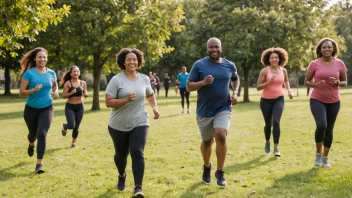In an era where environmental consciousness is growing, community clean-up events have emerged as a vital way for residents to engage with their surroundings, foster social bonds, and contribute to the health of their local ecosystems. Organizing these events, however, requires careful planning, clear communication, and an enthusiastic community spirit. This article will guide you through the essential steps to effectively organize a community clean-up event, ensuring that your initiative not only cleans up the environment but also strengthens community ties and raises awareness about ecological issues.
Understanding the Importance of Clean-Up Events
Community clean-up events serve multiple purposes. They not only address litter and pollution in public spaces but also educate participants about the importance of environmental stewardship. Furthermore, these gatherings can galvanize community members, making them feel proud of their neighborhood and encouraging ongoing commitment to maintaining cleanliness. The collective action fosters a sense of belonging and responsibility among residents, leading to a healthier environment for all.
Planning Your Clean-Up Event
Successful clean-up events begin with thorough planning. Here are the crucial steps to consider:
- Select a Date and Time: Choose a date that avoids major holidays or local events to maximize participation. Weekends often work best as people are generally more available.
- Identify the Location: Pick an area that needs attention, such as parks, beaches, or neighborhoods suffering from litter. Assess the space to understand the scope of work needed.
- Obtain Permits: Depending on your location, you may need permits from local authorities to conduct a clean-up. Check with your city or town hall for specific requirements.
- Gather Supplies: Collect necessary materials such as trash bags, gloves, and recycling bins. Local businesses may be willing to donate supplies or offer support.
- Recruit Volunteers: Use social media, community bulletin boards, and local organizations to spread the word and recruit volunteers. Encourage participants to bring friends and family.
Promoting Your Event
Effective promotion is key to a successful clean-up event. Here are some strategies to consider:
- Utilize Social Media: Create an event page on platforms like Facebook or Instagram to share details and updates. Use engaging visuals and hashtags to reach a broader audience.
- Engage Local Media: Contact local newspapers, radio stations, and community blogs to announce your event. A press release can help garner attention.
- Create Flyers: Design eye-catching flyers to distribute in local businesses, schools, and community centers. Be sure to include essential information such as date, time, location, and how to get involved.
- Leverage Local Organizations: Partner with local environmental groups, schools, or businesses to expand your reach and credibility. They may already have networks in place that can help promote your event.
Executing the Clean-Up
On the day of the clean-up, ensure everything runs smoothly:
- Set Up a Check-In Area: Have a designated space for volunteers to sign in, collect supplies, and receive instructions. This helps keep track of participation and ensures everyone is equipped.
- Provide Clear Instructions: Before starting, gather everyone and explain the plan for the day. Emphasize safety measures, such as avoiding hazardous materials and staying hydrated.
- Encourage Teamwork: Divide volunteers into smaller groups, assigning each group a specific area to cover. This not only makes the task more manageable but also fosters camaraderie.
- Document the Effort: Take photos and videos throughout the clean-up. These materials can be used for future promotions and to celebrate the collective effort.
After the Clean-Up
The work doesn’t end once the trash is collected. Here are some steps to take afterward:
- Dispose of Waste Properly: Ensure that collected trash and recyclables are disposed of correctly. Coordinate with local waste management for proper disposal methods.
- Thank Volunteers: Show appreciation to all participants through thank-you notes, social media shout-outs, or a small gathering. Recognizing their efforts fosters goodwill and encourages future participation.
- Evaluate the Event: Gather feedback from volunteers to understand what worked well and what could be improved. This information is invaluable for planning future clean-up initiatives.
- Share Results: Highlight the impact of the clean-up by sharing before-and-after photos, the amount of waste collected, and any media coverage. This not only celebrates the achievement but also raises awareness about the importance of ongoing clean-up efforts.
Encouraging Ongoing Engagement
To maintain the momentum generated by your clean-up event, consider establishing regular clean-up days or forming a community group dedicated to environmental issues. Encourage participants to adopt areas, creating a sense of ownership and accountability. By fostering an ongoing dialogue about environmental stewardship, you can inspire more residents to take action in their daily lives, whether through recycling, reducing waste, or advocating for local environmental policies.
Conclusion
Organizing a community clean-up event can be a rewarding experience that not only beautifies your surroundings but also strengthens community bonds and raises awareness about environmental issues. By following the steps outlined above, you can create a successful initiative that encourages participation and inspires ongoing commitment to protecting your local environment. Remember, every small action counts, and together, communities can make a significant impact on the health of our planet.






